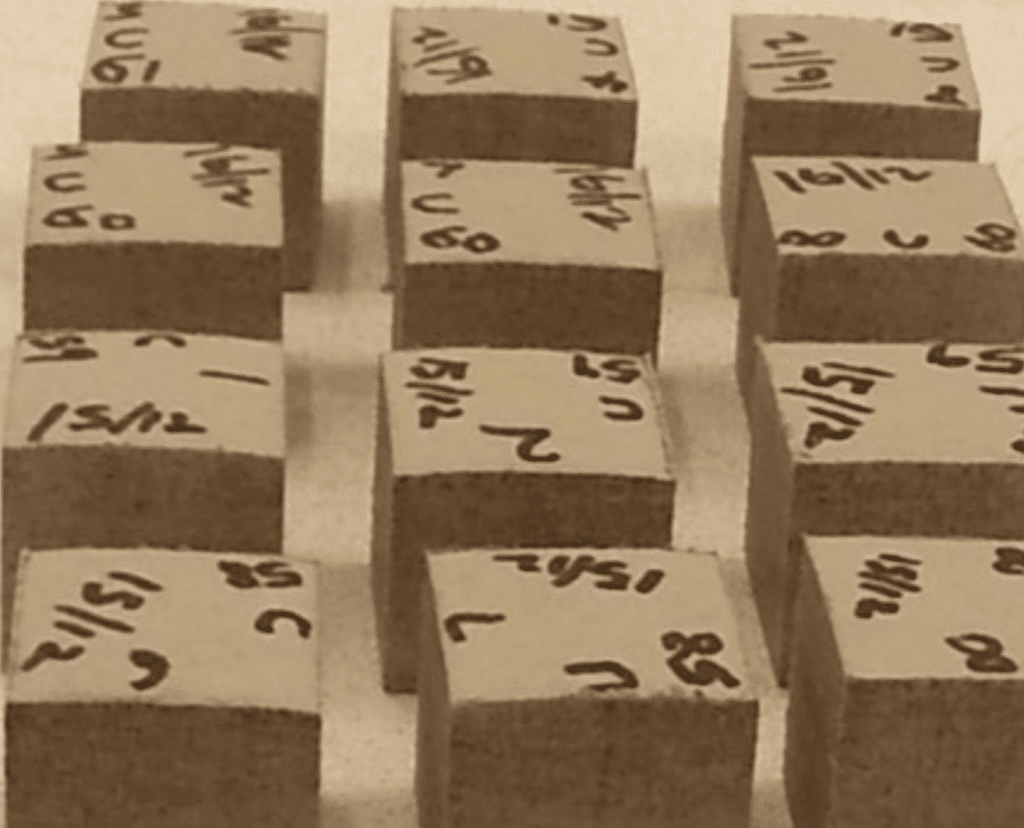The availability of affordable housing and road infrastructure plays a major role in the economic growth of any country. Evidence from the World Bank has shown that 10% infrastructural growth contributes to 1% growth in GDP. My doctoral research focused on the innovative use of waste in the production of eco-friendly, low-cost, and sustainable construction materials, in particular the lightweight, non-load bearing blocks used in housing construction.
Through my research, I created an eco-friendly block unit, designated as a ‘Cement-less Wastepaper-based Lightweight Block’ (CWLB). I innovatively utilised wastepaper as a major filler and partial replacement for fine aggregate and utilised ‘waste lactose’ (a waste by-product of the dairy industry) to create a binder, replacing the conventional and controversial Portland cement. Concrete causes up to 8% of the world’s CO2 emissions and has been linked to respiratory illnesses.
A CWLB contains 75% waste content and exhibits properties satisfying the requirements for application as a non-load bearing lightweight block in building construction. A CWLB also displays compressive strength far outweighing that recorded for the existing cement-based wastepaper blocks available.
Environmental benefits
The potential benefits of the methodologies I developed as a result of this research and the consequent implementation of CWLB as a building material in the construction industry are numerous.
The properties of CWLB as a material in wall construction and its eco-friendliness in terms of natural resources conservation and improved compressive strength suggests that it may serve as a more sustainable low-cost alternative to the existing conventional non-load bearing blocks.
The utilisation of locally available waste materials in the production of CWLB and the zero-cement content also addresses several environmental impacts associated with the construction industry, including high consumption of natural resources, greenhouse gas emission, and the environmental pollution resulting from unsustainable waste generation.
Building a future
Presently, the demand for housing in some low and middle-income Commonwealth countries is much higher than the housing construction volume. The low cost plus lightweight properties of CWLB and its impressive thermal resistance properties mean that implementing CWLB in building construction could contribute to the provision of affordable housing in these countries. Nigeria requires at least 1 million housing units every year to meet the 17 to 20 million housing deficit targets by 2033. The low production cost and lightweight properties of CWLB will help reduce the cost of construction and its high thermal resistance properties will reduce the cost of heating and cooling buildings during its service life. This may lead to huge energy savings for the government and cost-savings for the occupiers of buildings.
Collaborate to innovate
To date, I have implemented my research findings through collaborations with local masonry block factories in Nigeria. Through these collaborations, I have seen the real-life/in-
situ application of Wastepaper Aggregate (WPA), an artificial cellulosic aggregate innovatively produced from post-consumer wastepaper, as a partial replacement of natural aggregate
in the masonry block production. The integration of WPA is presently helping local private masonry block-producing factories and construction firms to achieve a lower production cost, and smaller usage of natural aggregate, while also producing blocks with satisfactory properties and attendant profit increase.
Through the pilot stage of these engagements, innovative building materials, including lightweight blocks incorporating wastepaper, ceiling boards incorporating sawdust, ceiling boards incorporating wastepaper, and ceiling boards incorporating kanekalon wastes (artificial hair), have been developed with the potential for further optimisation of these innovative products and subsequent development of the initiatives into small and medium scale enterprises (SMEs) in the near future.
Further research

Cement-less Wastepaper-based Lightweight Block specimen produced from 75% recycled wastes
Following my Commonwealth Scholarship, I was awarded
a Blue Charter Fellowship through the Association of Commonwealth Universities in 2018 to further my research in the development of eco-friendly building materials. I investigated the applicability of recycled polythene wastes, such as shopping bags and film packaging, as a binder in the production of low-cost polymer-based paving blocks, which would be suitable for construction of pavement for light traffic roads. Based on the evidence gathered so far, waste materials such as nylon and polythene can be recycled and used as universal adhesives and moulding materials.
I am hopeful that the implementation of my research into wider construction and building practices will reduce the impact of construction on the environment and meet the growing demand for affordable and sustainable housing in low- income and higher-income countries.





